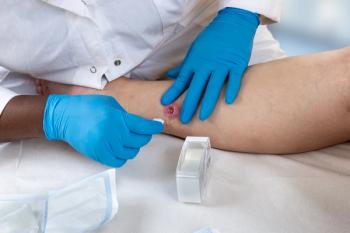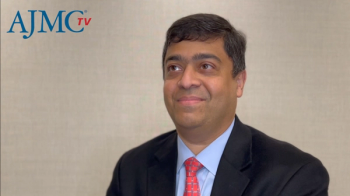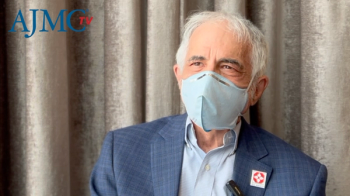
- October 2020
ESC Research Report: Managed Care, Social Determinants in Cardiology
Below are selected abstracts presented at the European Society of Cardiology 2020 Congress, which was held in a virtual format due to the coronavirus disease 2019 pandemic.
Prescribing patterns in diabetes and heart failure. Data presented by researchers from Novartis, makers of sacubitril/valsartan (Entresto), show that US physicians are more likely to prescribe the heart failure (HF) drug alongside a sodium glucose co-transporter 2 (SGLT2) inhibitor to younger, male patients with a better renal profile.
Patients with type 2 diabetes (T2D) are 2 to 4 times more likely to develop HF than persons without diabetes, and HF is also a risk factor for diabetes. SGLT2 inhibitors have been shown to lower blood glucose in patients with T2D and prevent hospitalization for HF (HFH) in this same group, and since 2015, cardiovascular outcomes trials have shown some evidence of protection against renal decline.
Emil Loefroth, PhD, of Novartis Sweden presented findings analyzing Optum claims data on US prescribing patterns for sacubitril/valsartan. This is an angiotensin receptor neprilysin inhibitor that reduces the risk for cardiovascular death or HFH in patients with HF with reduced ejection fraction; it is being evaluated by the FDA for patients with HF with preserved ejection fraction. Of the 2.3 million patients with HF identified, 41.6% had a T2D diagnosis.
Among them, 560 patients were simultaneously prescribed sacubitril/valsartan and an SGLT2 inhibitor (cohort 1), while 1566 were prescribed sacubitril/valsartan alongside a glucagon-like peptide-1 (GLP-1) receptor agonist or a dipeptidyl peptidase-4 inhibitor (DPP-4) inhibitor (cohort 2). Loefroth and his fellow researchers found:
- Cohort 1 had a smaller share of women (27.9%) than cohort 2 (35.0%).
- The patients in cohort 1 were younger (mean age, 61.4 years) compared with cohort 2 (mean age, 66.4 years).
- The share of patients with stage 3 chronic kidney disease (estimated glomerular filtration rate <60 to >30 mL/min/1.73 m2) was 11.8% in cohort 1 and 24.4% in cohort 2.
- Where data were available, the median NT-proBNP differed between the cohorts, at 914 (2154) pg/mL for cohort 1 and 2290 (5301) pg/ml for cohort 2, indicating a much healthier profile for the first group. However, complete values were available for only 17.7% of cohort 1 and 19.0% of cohort 2.
Data used were derived from the Optum database between July 1, 2014, and December 31, 2019. The index date for each patient was the date for the second prescription of “overlapping interest,” so it is not possible to tell which drug was prescribed first. Sacubitril/valsartan was approved by the FDA in July 2015, while the first SGLT2 inhibitor was approved in March 2013 (canagliflozin) and the second in January 2014 (dapagliflozin). The first DPP-4 inhibitor was approved in 2006, and the first GLP-1 receptor agonist was approved in 2012.
Since the end of data collection, the FDA has approved canagliflozin for a renal indication based on the April 2019 CREDENCE trial for patients with T2D. This past weekend, data from DAPA-CKD showed that dapagliflozin could prevent renal decline in patients with HF regardless of diabetes status.
Reference
Loefroth E, Hughes M, Shi Y, et al. Patient and clinical characteristics of heart failure patients concomitantly prescribed SGLT2 inhibitors and sacubitril/valsartan, a database cohort study using the Optum electronic health record data. Presented at: the European Society of Cardiology 2020 Congress; August 28, 2020.
Socioeconomic status in acute coronary syndrome. The connection between social determinants of health and outcomes is gaining attention in the United States, and much has been made of the lack of access to health care among the poor.
But a study presented from Australia at ESC 2020 found that socioeconomic status can affect outcomes after a hospitalization for acute coronary syndrome (ACS), even in countries with universal health coverage. In short, the poorer patients were more likely to die early compared with the wealthiest patients, even though they took medications. Far fewer from the poor groups took part in cardiac rehabilitation.
Researchers linked SNAPSHOT ACS data and its 18-month follow-up to admissions data from across Australia, as well as the national death index and pharmacy benefits data for a period of 3 years following discharge for ACS. Data were divided into 5 groupings, with group 1 having the lowest socioeconomic status and group 5 having the highest, based on the country’s national economic statistics bureau, using residential postal codes as a marker. Outcomes were cardiac rehabilitation participation and smoking rates 18 months after discharge, the use of at least 3 of 4 indicated therapies, all-cause death, and cardiovascular disease (CVD) rates 36 months after discharge.
Results. Among 1655 patients with ACS (median [SD] age, 68 [13.5] years), 65% of whom were male, 21% were in group 1, 22% in group 2, 23% in group 3, 18% in group 4, and 15% in group 5. After 18 months, follow-up was done with 61% of the patients, with comparable loss to follow-in across each group. Patients in groups 1 and 2 had the lowest participation rates in cardiac rehab compared with those in the group 5 (odds ratio [OR], 0.60; 95% CI, 0.36-0.99 for group 1; OR, 0.56; 95% CI, 0.35-0.91 for group 2). Odds of smoking were higher among those in group 3 than in group 5 (OR, 2.60; 95% CI, 1.15-5.89), but other patterns were seen.
By 36 months after discharge, there was no difference in the odds of using at least 3 of 4 medications among the groups. Even so, patients from group 1 (OR, 1.96; 95% CI, 1.19-3.21) and group 2 (OR, 1.91; 95% CI, 1.19-3.07) were more likely to die than those in group 5. The odds of CVD readmission did not differ across groups.
Reference
Hyun K. Brieger D, Briffa T, et al. The impact of socioeconomic status on secondary prevention of the acute coronary syndrome. Presented at: the European Society of Cardiology 2020 Congress; August 28, 2020.
Predicting readmission in CAD. Risk calculators have been developed to assess the likelihood of a second event in coronary artery disease (CAD), but their value has been limited without information on which patients would benefit from intensive management. Investigators at the Baker Heart and Diabetes Institute in Melbourne, Australia, applied an existing risk score to predict readmission of patients with CAD and determine if higher-risk patients get more benefit from intensive medical and interventional strategies.
The study covered 19,940 patients admitted to a hospital in 2010 with CAD; they were followed through 2015. A risk score validated through PEGASUS-TIMI54 was used to stratify patients based on risk of future events, with a score of 6 as the cutoff. Patients who scored below 6 were low risk, while those who scored ≥6 were high risk and recommended for intervention. The primary outcome was all-cause readmission; other outcomes were all-cause mortality and days alive and out of the hospital within 5 years of discharge.
Results. The 6573 high-risk patients included more males and Indigenous people, with more comorbidities who were more likely to be readmitted or dead at 5 years than the low-risk group, who numbered 13,367. Patients who were taking beta-blockers, ACE inhibitors or ARBs, or who had percutaneous coronary intervention (PCI, a stent) were less likely to be readmitted and showed a negative interaction with predicted risks—indicating that the benefits increased for the higher-risk patients. Conversely, those who had coronary artery bypass graft (CABG), were more likely to be readmitted (HR, 1.44; 95% CI, 1.15-1.80) and showed a negative interaction with patients predicted risks.
The authors wrote that patients who receive CABG are more likely to be readmitted than those who do not receive this procedure, with “this trend reduced for patients with higher risks.” The analysis of secondary outcomes suggest that interventions reduce mortality risks, with CABG having the strongest effect (HR, 0.34; 95% CI, 0.29-0.48). Results suggest high-risk patients who receive statins, PCI, and CABG have improved survival odds.
Reference
Huynh Q, Ngheim S, Byrnes J, et al. Secondary prevention in coronary artery disease: a risk-guidance may be beneficial. Presented at: the European Society of Cardiology 2020 Congress; August 28, 2020.
Articles in this issue
about 5 years ago
Surgeon General Issues Call to Action on Hypertensionabout 5 years ago
Patients Take Different Statins, but Vascepa Benefits Are the Sameabout 5 years ago
New Renal, HF Results Seen in 2020 ACC Pathway on CV Risk ReductionNewsletter
Stay ahead of policy, cost, and value—subscribe to AJMC for expert insights at the intersection of clinical care and health economics.

















































